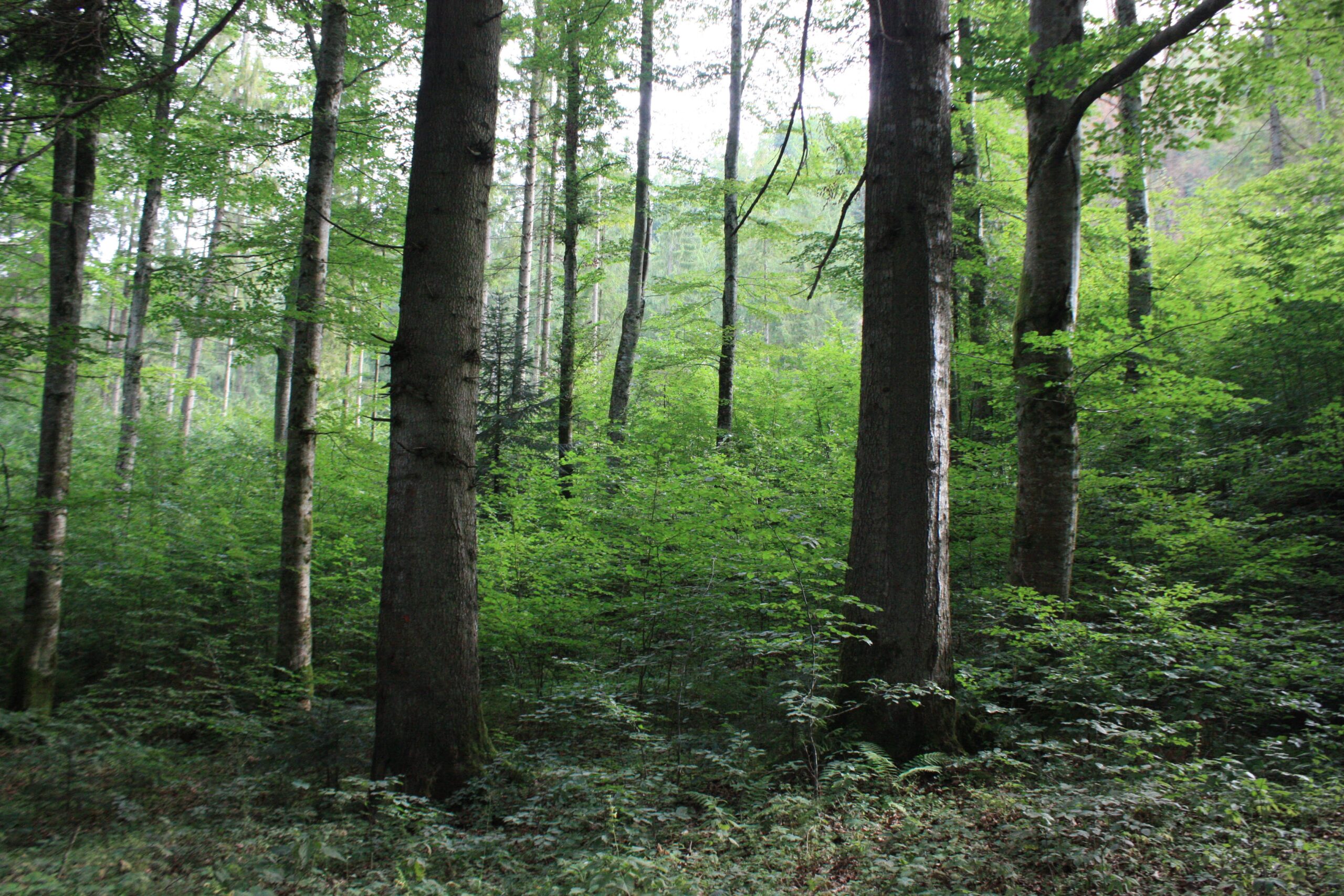
Exploring resilience dynamics of European forests after drought and compound hot and dry extreme events
- Project by: Science Hub Team
- November 11, 2025
Agata Elia, Dr, Internal Research Fellow @ Esrin Science Hub
The increase in the frequency of drought and compound hot and dry extreme events have been raising further concern for the future of forests, due to the link between drought, heat and tree mortality (Senf et al., 2020). The correlation between droughts and the decreasing rate of live biomass carbon stocks has also been recently explored (Li et al., 2025). European forests are expected to be heavily affected, in a continent particularly subject to compound hot and dry extreme events in terms of area and duration (Weynants et al., 2025).
Resilience represents the ecosystem capacity to resist and recover from perturbations. Subject to increasing research interest in recent years, the resilience of forest ecosystems has been measured both via the post-disturbance rate of recovery to the original state and through more novel Critical Slowing Down (CSD) indicators, such as the lag-one autocorrelation (AC1) and the variance of a representative system variable (Bathiany et al., 2023). Evidence exists on the agreement between these metrics (Smith et al., 2022), and forests with higher resilience are found in regions with lower aridity (Smith and Boers, 2023). Nevertheless, few studies exist that explore the resilience of forests to actual specific extreme events, and they are mostly based on in-situ measurements (Serra-Maluquer et al., 2018; Cerioni et al., 2023) or focus only on post-disturbance recovery change (Anderegg et al., 2020).

In the context of her post-doc as Internal Research Fellow at the ESA Science Hub, Agata Elia is exploring the resilience of European forests to drought extreme events, hot and dry compound extreme events and consecutive extreme events. Both critical slowing down indicators and post-disturbance recovery time derived from EO are used synergically, with the aim of investigating whether forests undergoing single or multiple extreme events manifest specific resilience dynamics and show any spatial patterns in these dynamics. Finally, the assessment of different responses of forests to extreme events might highlight the pre-conditions that make forests more or less resilient to these extreme events, such as their heterogeneity (Mahecha et al., 2024).

The datasets expected to be used in this research are, among others:
- Daily time series of Surface Reflectance at 500m spatial resolution from MODIS Terra (MOD09GA) and Aqua (MYD09GA) datasets, from 2003 to 2022
- Hansen Global Forest Change v1.11 (2000-2024)
- Dheed global database of dry and hot extreme events based on ERA5 (Weynants et al., 2025)
This research is carried out by Agata Elia. Please feel free to reach out to her email for further details on this research and collaborations.
References:
- Anderegg, W.R.L., Trugman, A.T., Badgley, G., Konings, A.G., Shaw, J. et al. Divergent forest sensitivity to repeated extreme droughts. Nat. Clim. Chang. 10, 1091–1095 (2020). https://doi.org/10.1038/s41558-020-00919-1
- Bathiany, S., Bastiaansen, R., Bastos, A. et al. Ecosystem Resilience Monitoring and Early Warning Using Earth Observation Data: Challenges and Outlook. Surv Geophys 46, 265–301 (2025). https://doi.org/10.1007/s10712-024-09833-z
- Cerioni, M., Brabec, M., Bače, R., Bāders, E., Bončina, A., Brůna, J., Chećko, E., Cordonnier, T., de Koning, J. H. C., Diaci, J., Dobrowolska, D., Dountchev, A., Engelhart, J., Fidej, G., Fuhr, M., Garbarino, M., Jansons, Ā., Keren, S., Kitenberga, M., & Nagel, T. A. Recovery and resilience of European temperate forests after large and severe disturbances. Global Change Biology, 30, e1715 (2024). https://doi.org/10.1111/gcb.17159
- Li, X., Ciais, P., Fensholt, R. et al. Large live biomass carbon losses from droughts in the northern temperate ecosystems during 2016-2022. Nat Commun 16, 4980 (2025). https://doi.org/10.1038/s41467-025-59999-2
- Mahecha, M. D., Bastos, A., Bohn, F. J., Eisenhauer, N., Feilhauer, H., Hickler, T., et al. Biodiversity and climate extremes: Known interactions and research gaps. Earth’s Future, 12, e2023EF003963 (2024).. https://doi.org/10.1029/2023EF003963
- Senf, C., Buras, A., Zang, C.S. et al. Excess forest mortality is consistently linked to drought across Europe. Nat Commun 11, 6200 (2020). https://doi.org/10.1038/s41467-020-19924-1
- Serra-Maluquer, X., Mencuccini, M., Martínez-Vilalta, J. Changes in tree resistance, recovery and resilience across three successive extreme droughts in the northeast Iberian Peninsula. Oecologia 187, 343–354 (2018). https://doi.org/10.1007/s00442-018-4118-2
- Smith, T., Boers, N. Global vegetation resilience linked to water availability and variability. Nat Commun 14, 498 (2023). https://doi.org/10.1038/s41467-023-36207-7
- Smith, T., Traxl, D., Boers, N. Empirical evidence for recent global shifts in vegetation resilience. Nat. Clim. Chang. 12, 477–484 (2022). https://doi.org/10.1038/s41558-022-01352-2
- Weynants, M., Ji, C., Linscheid, N., Weber, U., Mahecha, M. D., Gans, F. Dheed: an ERA5 based global database of dry and hot extreme events from 1950 to 2022. Earth Syst. Sci. Data Discuss. 2024, 1–31 (2024). https://doi.org/10.5194/essd-2024-396

